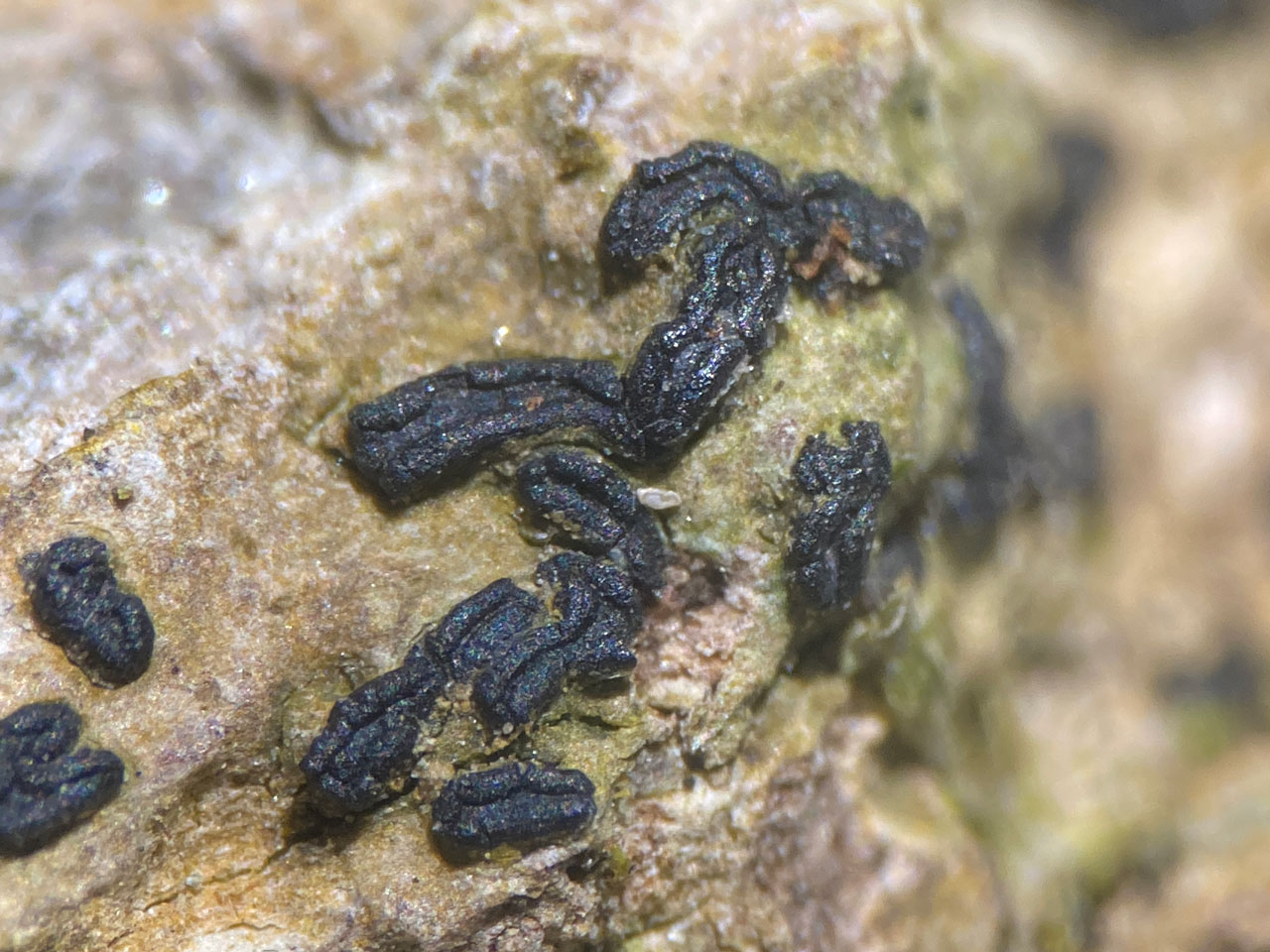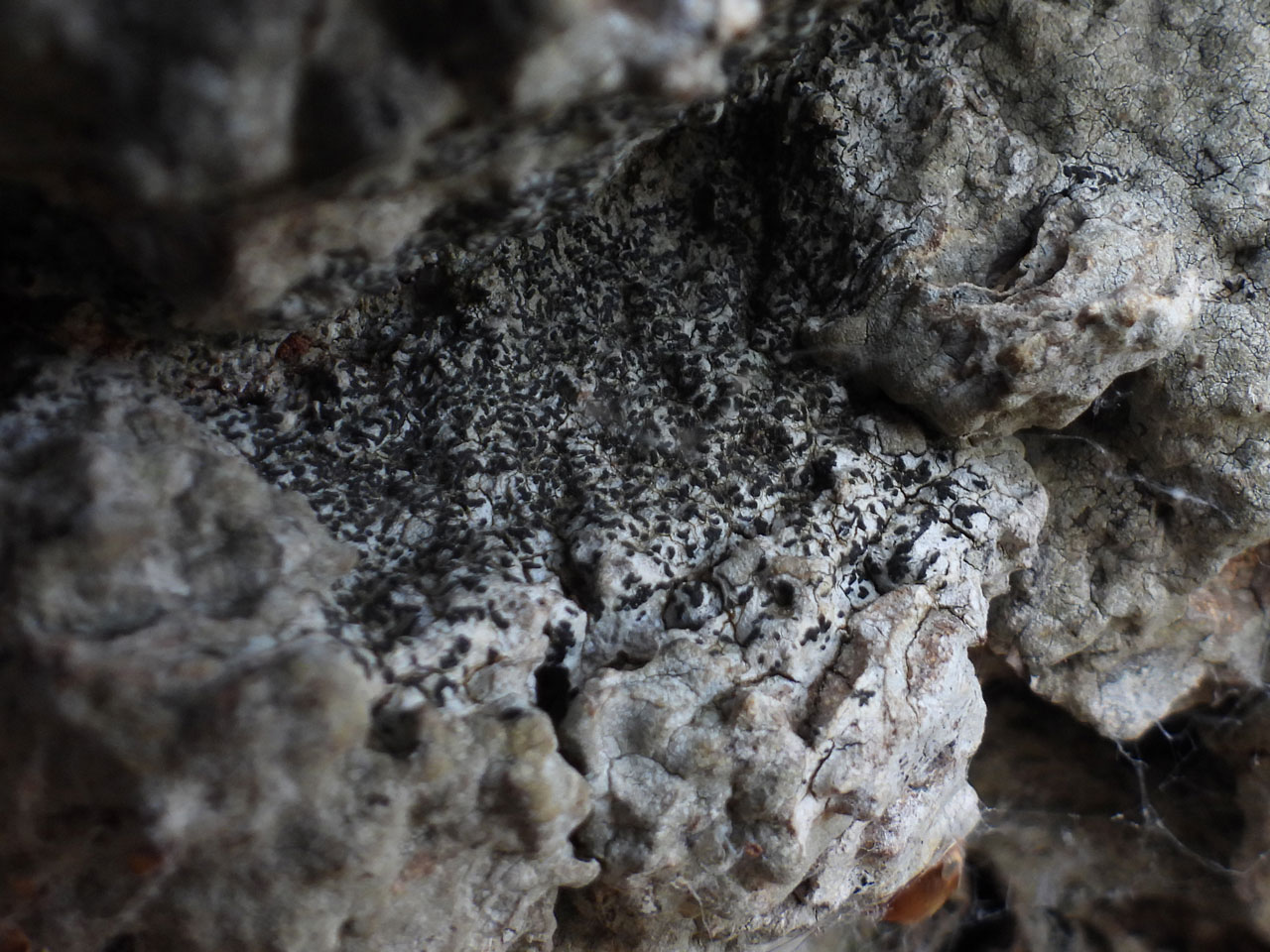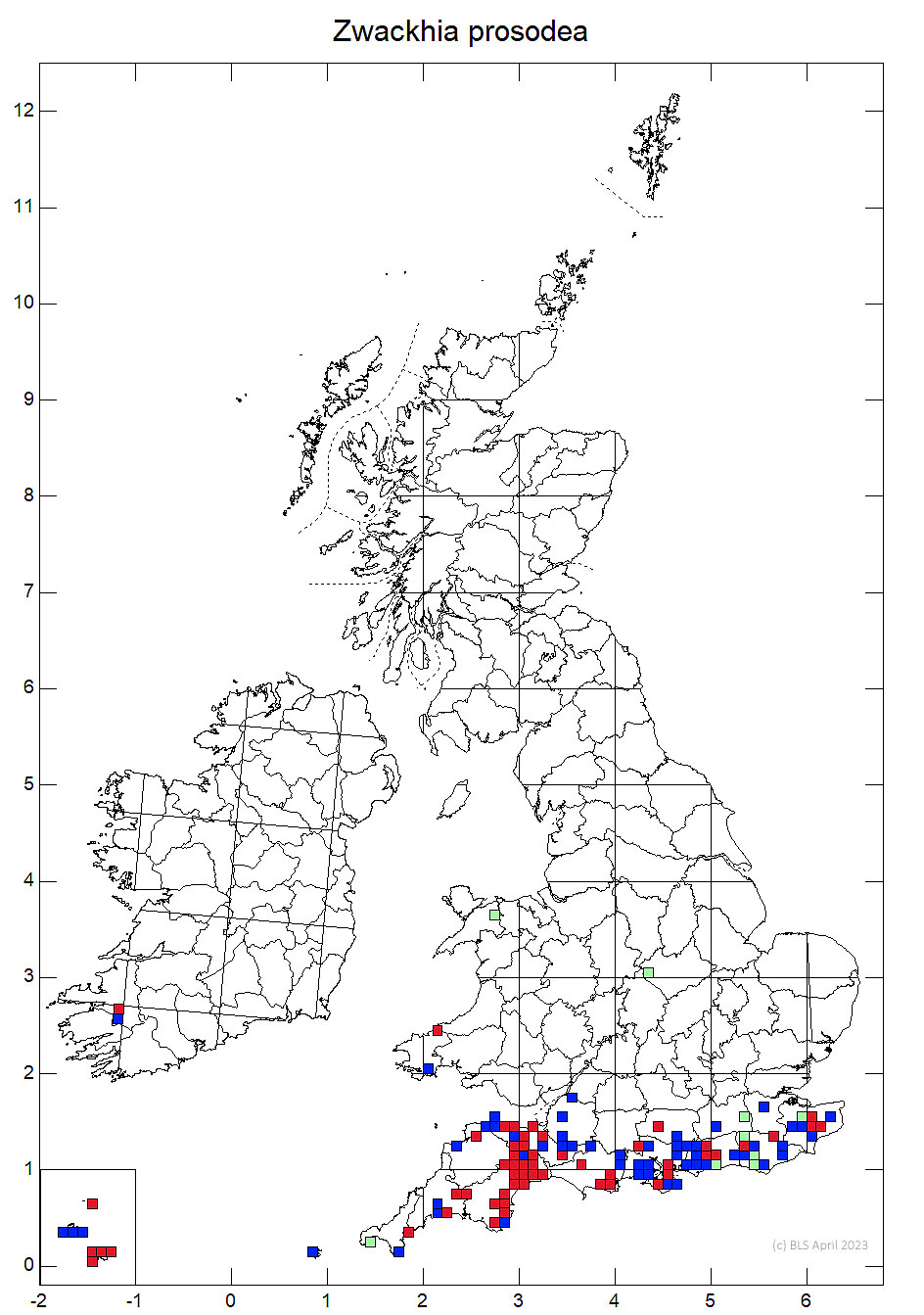A very southern lichen of dry bark on veteran trees, mainly Oak, often in mildly nutrient enriched habitats. Characterised by the bulky tall curved to serpentine lirellae with the disk a persistent slit and the dry bark habitat.
Thallus thin, sometimes ± inconspicuous, smooth and somewhat membranous or minutely cracked, pale to dark grey, occasionally olive-green to dull olive-brown. Apothecia (1–) 1.2–2.3 (–3) × 0.2–0.35 mm, 0.10–0.20 mm tall, prominent, sessile, scattered or contiguous, sometimes massed and interconnected, straight or mostly curved or serpentine, infrequently branched; disc persistently slit-like; exciple swollen, K+ greenish olive in section; epithecium pale brown; hymenium 90–100 μm tall, I+ red. Ascospores (40–) 50–70 (–80) × 6–8 μm, 8- to 14-septate, elongate-fusiform, with a distinct gelatinous sheath. Conidia 4–6 × 0.5–1 μm, straight. Thallus C–, K–, KC–, Pd–, UV– (no lichen products detected by TLC).
Zwackhia viridis, which also has 9- to 15-septate spores, has smaller, knot-like lirellae and occurs on flushed, not dry, shaded bark.
On dry shaded rough bark of veteran trees (Lecanactidetum premneae & Arthonietum impolitae communities), especially Oak and also on very shaded boles of old Yew in churchyards (although some older records from Yew in the east appear to be errors for Alyxoria xerica), but also other species locally such as Hornbeam, often forming extensive patches. Characteristic dry bark communities in somewhat nutrient rich habitats and is more frequent in parkland than in pasture woodland and is absent from Lecanactidetum premneae communities in low nutrient environments. Unlike many other Lecanactidetum premneae species, it is tolerant of full exposure to sunshine, so will be found on the south sides of trees in the open.

Very local S. England, Channel Islands, rare in S. Wales, S.W. Ireland.
Confined to veteran trees in the far south, usually in small numbers, but there are some larger populations in some old deer parks such as Brockhanger Wood, Hatch Park, Kent on Hornbeam pollards (Sanderson, 2021) and Parham Park, Sussex (23 trees, Sanderson (2023)).
Britain: Near Threatened & International Responsibility species
Wales: Vulnerable & Section 7 species
England: Section 41 species
Cannon, P., Coppins, B., Ertz, D., Pentecost, A., Sanderson, N., Simkin, J. & Wolseley, P. (2021). Arthoniales: Lecanographaceae, including the genera Alyxoria, Lecanographa, Phacographa, Plectocarpon and Zwackhia. Revisions of British and Irish Lichens 14: 1-15.
Sanderson, N. A. (2021) Lichen Survey of Brockhanger Wood & Part of Hatch Park, Kent 2021. A report by Botanical Survey & Assessment to Plantlife.
Sanderson, N. A. (2023) Lichen Survey of Parham Park, West Sussex 2021. A report by Botanical Survey & Assessment to Natural England.
Text by Neil A Sanderson, based on Cannon et al (2021)




